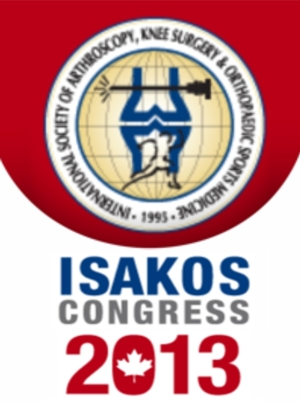
ISAKOS: Complications after ACL reconstruction with PT, HT, DB autografts are common

ISAKOS: Complications after ACL reconstruction with PT, HT, DB autografts are common
A Detailed Prospective and Blinded Analysis of Complications/Adverse Events in Patients Having ACL Reconstruction
CONFERENCE ACE REPORTS
This ACE Report is a summary of a conference presentation or abstract. The information provided has limited the ability to provide an accurate assessment of the risk of bias or the overall quality. Please interpret the results with caution as trials may be in progress and select results may have been presented.
Synopsis
330 patients were randomized to undergo anterior cruciate ligament (ACL) reconstruction with either a patellar tendon (PT), a quadruple-stranded hamstring (HT), or a double-bundle hamstring (DB) autograft, to compare incidence of post-operative adverse effects between surgical methods. Following assessments over a 2 year period, results indicated that 13% of patients repeat surgery. Repeat surgery...
To view the full content, login to your account,
or start your 30-day FREE Trial today.
FREE TRIAL
LOGIN
Forgot Password?
Explore some of our unlocked ACE Reports below!

Learn about our AI Driven
High Impact Search Feature
Our AI driven High Impact metric calculates the impact an article will have by considering both the publishing journal and the content of the article itself. Built using the latest advances in natural language processing, OE High Impact predicts an article’s future number of citations better than impact factor alone.
Continue



 LOGIN
LOGIN

Join the Conversation
Please Login or Join to leave comments.